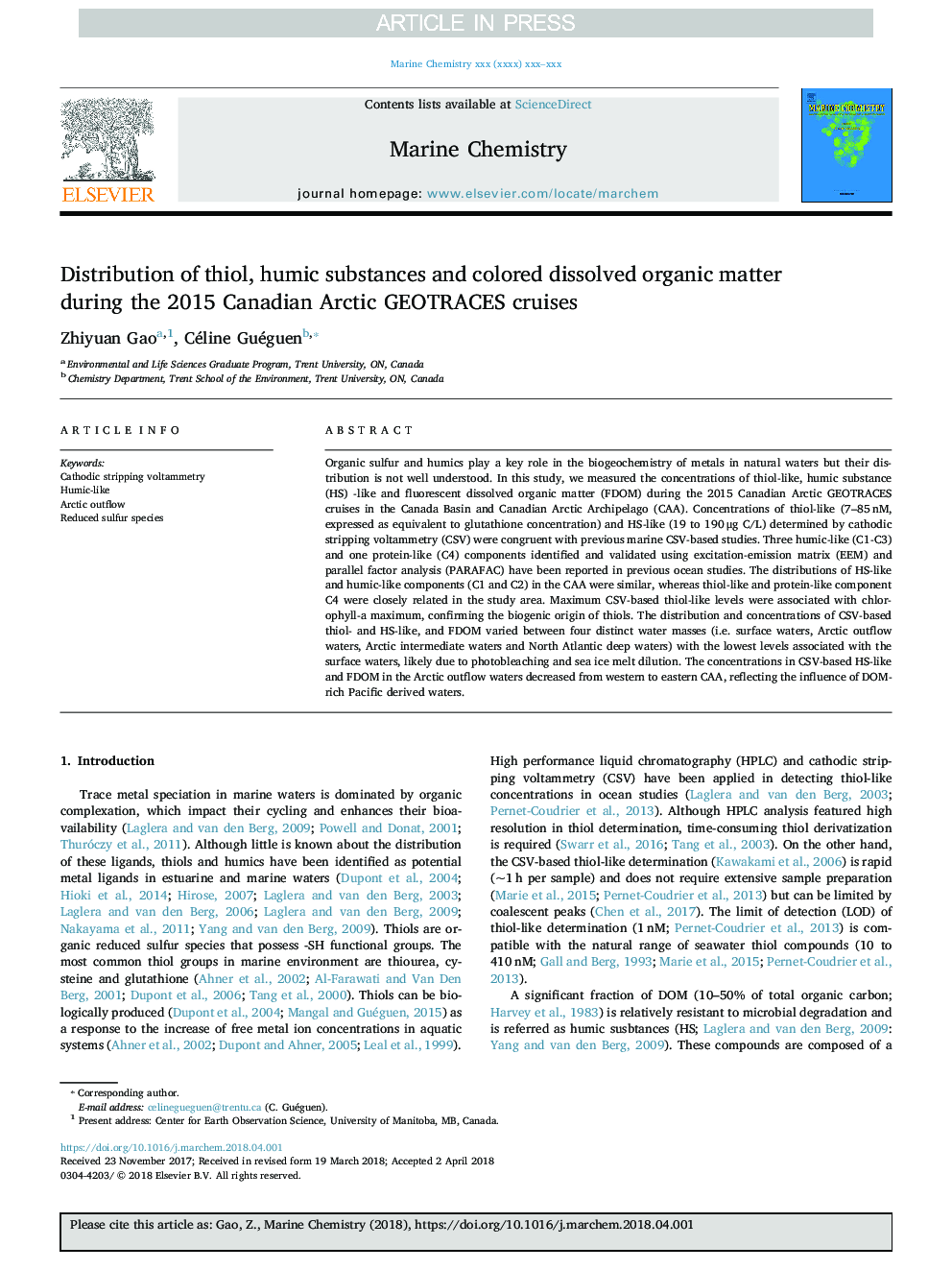| Article ID | Journal | Published Year | Pages | File Type |
|---|---|---|---|---|
| 7698779 | Marine Chemistry | 2018 | 9 Pages |
Abstract
Organic sulfur and humics play a key role in the biogeochemistry of metals in natural waters but their distribution is not well understood. In this study, we measured the concentrations of thiol-like, humic substance (HS) -like and fluorescent dissolved organic matter (FDOM) during the 2015 Canadian Arctic GEOTRACES cruises in the Canada Basin and Canadian Arctic Archipelago (CAA). Concentrations of thiol-like (7-85â¯nM, expressed as equivalent to glutathione concentration) and HS-like (19 to 190â¯Î¼g C/L) determined by cathodic stripping voltammetry (CSV) were congruent with previous marine CSV-based studies. Three humic-like (C1-C3) and one protein-like (C4) components identified and validated using excitation-emission matrix (EEM) and parallel factor analysis (PARAFAC) have been reported in previous ocean studies. The distributions of HS-like and humic-like components (C1 and C2) in the CAA were similar, whereas thiol-like and protein-like component C4 were closely related in the study area. Maximum CSV-based thiol-like levels were associated with chlorophyll-a maximum, confirming the biogenic origin of thiols. The distribution and concentrations of CSV-based thiol- and HS-like, and FDOM varied between four distinct water masses (i.e. surface waters, Arctic outflow waters, Arctic intermediate waters and North Atlantic deep waters) with the lowest levels associated with the surface waters, likely due to photobleaching and sea ice melt dilution. The concentrations in CSV-based HS-like and FDOM in the Arctic outflow waters decreased from western to eastern CAA, reflecting the influence of DOM-rich Pacific derived waters.
Related Topics
Physical Sciences and Engineering
Chemistry
Chemistry (General)
Authors
Zhiyuan Gao, Céline Guéguen,
